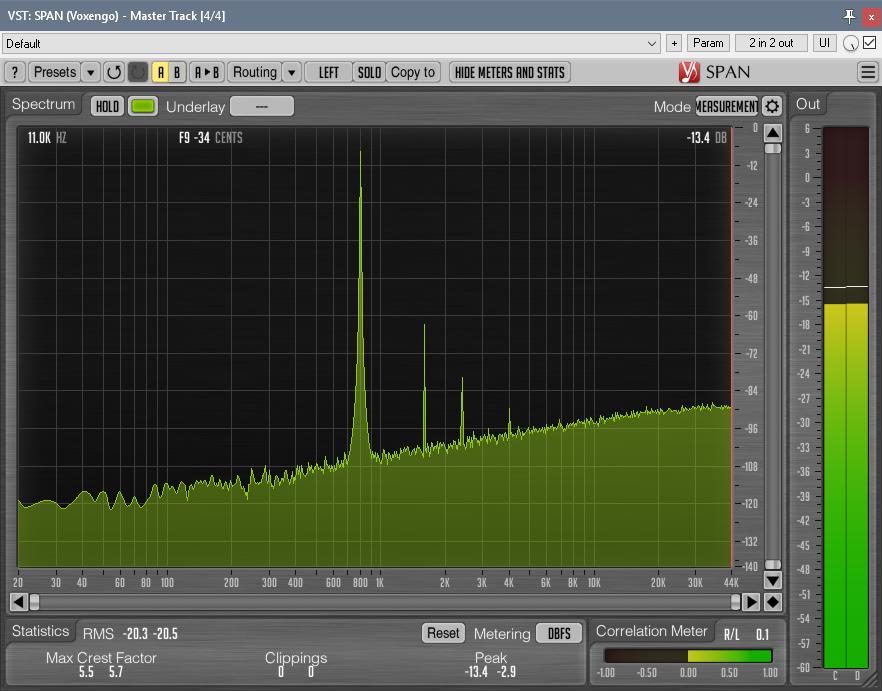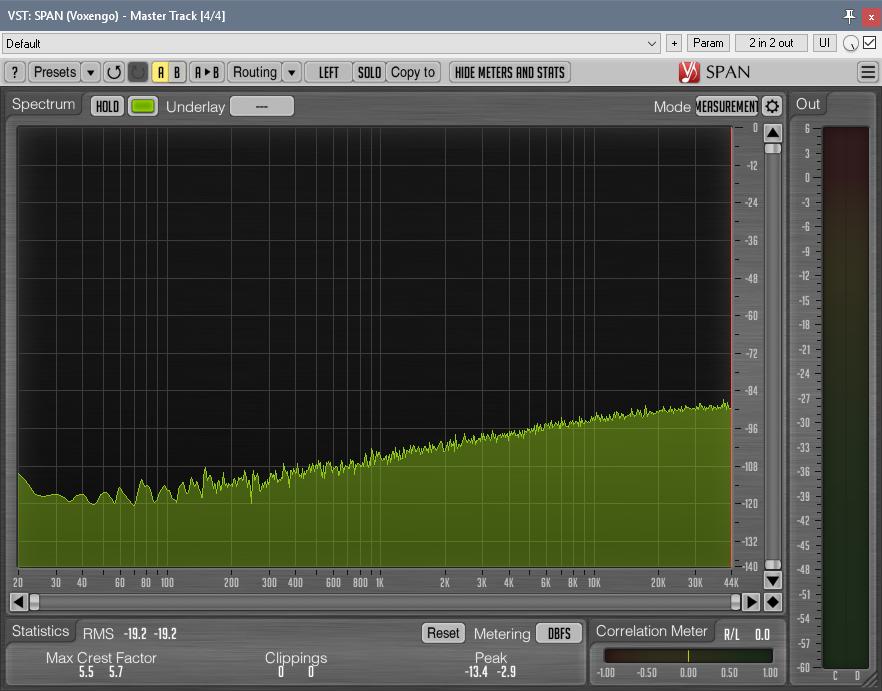So after pulling D1 and D3, I find that I still get noise when I touch the test probe on the cathode side of the respective diode connections and it continues like before and stops at R30. The noise occurs even when there is no tone being generated and goes away when the probe is removed. So I put D1 and D3 as well as T1-4 and made an unbalanced cable to go directly to BYP1 and used a jumper to make the appropriate connection to BYP2 to take the relay out and the input transformer out of the chain but I still get the same noise results. The attached picture shows the noise when idle and with tone the 1kHz peak is at -20dBFS.
I'm at a loss here. I've have some really sneaky problems that I've been able to solve in the past, but I've done everything I know to do and have maxed my abilities to understand and strategize a troubleshooting approach. If I could find out why I am getting noise when I touch the end of the probe to D1 or D3 or even when they are removed from the circuit then may I could find the culprit. I noticed that where I am injecting signal is also attached to the +20V rail, so maybe that is disrupting something.
Whatever it is, I think I've exhausted all the possibilities that I have been able to take into consideration. Somewhere after the input pot, not in the sidechain section, not the zeners and not in the output section is the answer to this mystery. The one thing that I thought might help is if the ground plane was separated from the audio ground, but if no one else is having problems like this then I don't know if it would be beneficial. I did manage to blow up D12, T15, and/or Q14 on one of the boards while I was trying to find were the noise was originating, so now that channel's output doesn't work. I'm probably going to put this one off to the side for now. Maybe later I will build one of these in reverse order of the schematic signal flow and see when I can start to make noise happen.
Thanks!
Paul






































